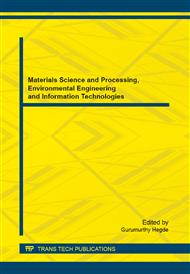[1]
Halpern Y, Denna M M , Niswander R H. Fire retardancy of thermoplastic materials by intumescence[J]. Ind Eng Chem Prod Res Dev, 1984, 23: 233- 238.
DOI: 10.1021/i300014a011
Google Scholar
[2]
Allen D W, Anderton E C and Shiel L E. Structure-property relationships in intumescent fire retardant derivatives of 4-hydroxymethyl-2, 6, 7-t rioxa-1-pho spha-bicyclo [2. 2. 2] octane-1-oxide[J]. Po lym Deg Stab, 1994, 45: 399- 408.
DOI: 10.1016/0141-3910(94)90210-0
Google Scholar
[3]
Heinrich H, Stefan P. The importance of intumescent systems for fire protection of plastic materials[J], Polymer International, 2000, 49(10): 1106-1114.
DOI: 10.1002/1097-0126(200010)49:10<1106::aid-pi539>3.0.co;2-i
Google Scholar
[4]
Wang D Y, Liu Y, Wang Y Z, Fire retardancy of a reactively extruded intumescent flame retardant polyethylene system enhanced by metal chelates[J], Polymer Degradation and Stability, 2007, 92(8): 1592-1598.
DOI: 10.1016/j.polymdegradstab.2007.04.015
Google Scholar
[5]
Halpern Y, Niswander R H. Process for preparing pentaerythritol phosphate[P]. US 4, 454, 064. (1984).
Google Scholar
[6]
Leonard J C, Harry A H, Frederick J V, et al. Intumescent polymer compositions[P]. US 6, 632, 442. (2003).
Google Scholar
[7]
Li X, Ou Y X, Zhang Y H, et al. Synthesis and structure of a novel caged bicyclic phosphate flame retardant[J]. Chinese Chemical Letters, 2000, 11(10): 887-890.
Google Scholar
[8]
Halpern Y, Niswander R H. Process for preparing amine salts of phosphoric acids[P]. US 4, 478, 998. (1984).
Google Scholar
[9]
Allen D W, Anderton E C, Shiel L E. Structure-property relationships in intumescentfire-retardant derivatives of 4-hydroxymethyl-2, 6, 7-trioxa-1- phosphabicyclo [2. 2. 2] octane-1-oxide[J]. Polymer Degradation and Stability, 1994, 45: 399-408.
DOI: 10.1016/0141-3910(94)90210-0
Google Scholar
[10]
Qian L J, Zhi J G, Tong B. Phosphorous epoxy resin synthesis and modification of research [J]. Plastic, 2006, 3(5): 57-60.
Google Scholar
[11]
Wang J C, Chen Y H, Flame-retardant mechanism resulting from an intumescent system[J], Journal of Fire Sciences, 2005, 23(1): 55-74.
DOI: 10.1177/0734904105044266
Google Scholar


